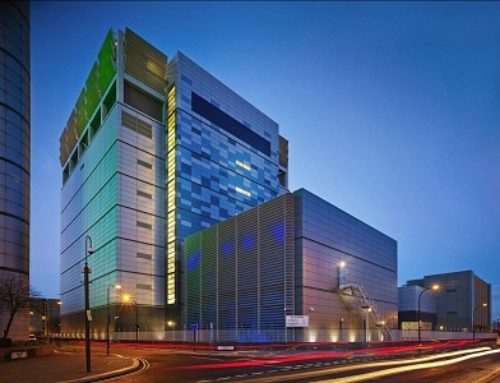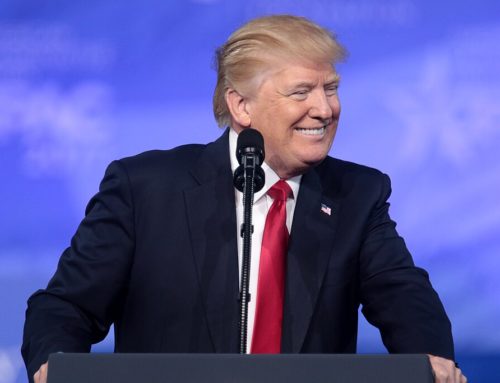1. Bulgarian FDI €116m in 1Q24
In recent years, Bulgaria has emerged as a significant player in the global economy, attracting substantial foreign direct investment (FDI). In 2024, the landscape of FDI in Bulgaria has seen remarkable developments. The first month of the year witnessed an FDI of 111.6 million euro, equivalent to 0.1 per cent of the country’s gross domestic product. This follows a significant growth of 48.4% in FDI inflows during the first nine months of 2023.
A noteworthy development in 2024 was the introduction of a new FDI screening mechanism in Bulgaria on March 12. This mechanism, which applies Regulation (EU) 2019/452, establishes a framework for the screening of FDI into the Union. This is a significant development in the regulatory landscape governing foreign investments in Bulgaria, although some uncertainty remains as to its impact.
Trends
Foreign Direct Investment (FDI) in Bulgaria has seen various trends over the years. Here are some key points:
– FDI inflows to Bulgaria maintained a steady course in the early 2000s and reached an all-time high in 2007, at USD 13.88 billion.
– According to UNCTAD’s World Investment Report 2023, FDI inflows decreased in 2022, reaching USD 2.5 billion, up from USD 1.9 billion one year earlier.
– The total stock of FDI stood at USD 57.3 billion at the end of 2022, around 64.4% of the country’s GDP.
– Data from the Central Bank of Bulgaria show that FDI into the country grew by 28.1% on the year to EUR 3.37 billion (US 3.62 billion) in 2023.
– The largest net FDI inflow into Bulgaria in 2023, of USD 862 million, came from Switzerland, followed by Austria with USD 396 million and Belgium with USD 354 million.
– The most active sector for inbound foreign investment in Bulgaria remains technology, media, and telecommunications, followed by construction, real estate, and financial services.
– With one of the lowest corporate tax rates in the area (10%) and its low labour costs, the country is relatively well-placed for foreign investments.
– However, there are challenges investors have to face, such as a shortage of skilled labor, corruption, unpredictability of the regulatory and legislative framework, and concerns about the rule of law.
– FDI inflows in Bulgaria grew by 48.4% in the first nine months of 2023.
Implications
The recent announcement of a 116 million euro investment in Bulgaria in the first month of 2024 could have several implications for both the Bulgarian economy and international investors:
For the Bulgarian Economy:
- Economic Growth: This investment could contribute to economic growth. The Bulgarian economy is expected to grow by 1.7% in 2023 and 2.8% in 2024. This investment could potentially boost these growth rates.
- Job Creation: Large investments often lead to job creation, which could help reduce unemployment rates and stimulate economic activity.
- Infrastructure Development: If the investment is directed towards infrastructure, it could lead to improvements that benefit various sectors of the economy.
- Inflation: Large investments can sometimes lead to inflation. The OECD projects inflation to be 9.5% in 2023, 4.5% in 2024, and 3.1% in 2025. The impact of this investment on inflation would depend on how it is deployed.
For International Investors:
- Increased Confidence: This investment could signal confidence in the Bulgarian economy, potentially attracting further foreign direct investment.
- Potential Returns: If the investment leads to economic growth, international investors could see higher returns.
- Risk Assessment: Investors will need to consider the potential risks associated with investing in Bulgaria, such as a shortage of skilled labour, corruption, unpredictability of the regulatory and legislative framework, and concerns about the rule of law.
Tax incentives
- Low Corporate Income Tax Rate: Bulgaria has a fixed corporate income tax rate of 10%, which is one of the lowest in the European Union.
- Exemption from Corporate Income Tax: Certain circumstances may qualify for an exemption from corporate income tax.
- Remission of Corporate Income Tax: In some cases, corporate income tax may be remitted.
- Accelerated Depreciation: Initial investment assets may qualify for accelerated tax depreciation.
- Tax Loss Carry Forward: Tax losses can be carried forward.
- VAT Incentive for Large Investment Projects: Large investment projects may qualify for a VAT incentive.
- Investment in High Unemployment Regions: 100% remission of income tax for manufacturing/production activities in high unemployment regions (subject to full reinvestment of the remitted tax).
- Additional Tax Deductions: Additional tax deductions may apply for hiring long-term unemployed, handicapped, or elderly persons.
- Investment in Regions with High Unemployment: Up to 100% of the CIT due for investment in regions with high unemployment may be granted back.
These incentives are designed to stimulate foreign direct investment and economic growth. However, the actual application and benefits of these incentives can vary depending on specific circumstances, so it’s always recommended for investors to seek professional advice. Please note that this information is current as of the sources’ last update and may have changed.
2. China FDI lowest in 3 decades

Brett Sayles via Pexels
In a startling economic trend, China is witnessing a 30-year low in foreign direct investment (FDI). This article aims to dissect the complex dynamics of this downturn, exploring its causes, implications, and potential future impact. As China has long been a powerhouse in the global economy, this significant decrease in FDI could have far-reaching effects, not only within China but also on the global economic stage. We will delve into the factors contributing to this decline, the potential repercussions for international investors, and the broader implications for global economic trends. Join us as we navigate this intricate issue, providing insight into the evolving landscape of global investment.
Reasons
The decline in foreign direct investment (FDI) into China can be attributed to several factors:
- Increased Labor Costs: China’s cost-effectiveness has been dwindling due to rising labour costs.
- Economic Slowdown: China’s once-envied double-digit economic growth has slowed, making it less attractive for investment.
- Trade Tensions and Supply Chain Disruptions: China’s growing role in the global economy has led to trade tensions, particularly with the U.S., causing disruptions in the supply chain.
- Geopolitical Instability: Geopolitical tensions, such as fraying relations with the United States and the geopolitical arbitrage of Chinese firms to avoid trade friction with the U.S., have made investors wary.
- Low Interest Rates: The country’s low interest rates have also been cited as a reason for the downturn.
- Closure of Due Diligence Firms and Falling Offshore IPOs: These factors have led to declining Chinese FDI inflows.
Trends
The trends in foreign direct investment (FDI) vary across different countries and regions. Here are some key observations:
- Global Trends: After a major slump in 2020 due to the COVID-19 pandemic, global FDI levels bounced back in 2021, reaching pre-pandemic levels. However, in 2022, global FDI inflows fell to 1.3 trillion U.S. dollars, showing a decrease of only 12 percent.
- United States: The United States was the top recipient of FDI inflows worldwide in Q3 2023, with USD 73 billion. It was also the top source of FDI outflows worldwide in the same quarter, with USD 110 billion.
- Ireland: Ireland was the second-largest recipient of FDI inflows worldwide in Q3 2023, with USD 26 billion.
- Canada and Brazil: Both Canada and Brazil ranked as the third-largest FDI recipient in Q3 2023, each with USD 15 billion.
- Japan: Japan was the second-largest source of FDI outflows worldwide in Q3 2023, with USD 60 billion.
- OECD Countries: FDI flows to OECD countries were 25% below the same period in 2022. FDI outflows from OECD countries were 11% below the same period in the previous year.
- Non-OECD G20 Economies: FDI flows into non-OECD G20 economies decreased by 58% in Q3 2023 compared to Q2, largely due to decreases in China. FDI outflows from non-OECD G20 economies increased by 7% in Q3 2023 compared to Q2.
It’s important to note that these trends are influenced by a variety of factors, including economic policies, market conditions, and geopolitical events. Comparatively, the decline in FDI into China is significant and could have implications for global economic trends.
Implications for the economy
The decline in foreign direct investment (FDI) into China has several implications for its economy:
- Economic Growth and Development: A decline in FDI may impact China’s economic growth and development. A reduced influx of foreign capital can limit the country’s ability to finance new projects, modernise industries, and create jobs.
- Exports and Real Estate: The current downward trend in FDI poses challenges for other key drivers of the Chinese economy, such as exports and real estate. Without effective measures to stimulate FDI or to innovate a new growth model, China’s economy is likely to face continued deceleration.
- Advanced Technology Sectors: Diminished investment flows into advanced technology sectors will negatively impact medium-term economic and productivity growth.
- Geopolitical Arbitrage: Some of the outflow of Chinese capital to other manufacturing destinations can be described as a kind of ‘geopolitical arbitrage’, allowing Chinese firms to side-step tariffs, and the risk of sanctions, by going abroad.
- Risk Aversion: The recent drop in FDI inflows to China could be temporary due to reduced business risk appetite and motivation to invest abroad following the US Federal Reserve’s sharp policy tightening.
It’s important to note that while these implications are significant, the situation is fluid and subject to change based on various factors including global economic conditions, geopolitical events, and policy changes both within China and internationally.
3. UAE takes aim at FDI

Alex Azabache via Pexels
The United Arab Emirates (UAE) continues to assert its dominance in the global economic landscape, with foreign direct investment (FDI) estimates indicating a staggering $2.5tn in Emirati investments abroad by the beginning of 2024. This robust financial footprint strengthens the UAE’s position as a significant global economic force.
The UAE’s strategic focus on emerging markets and the establishment of key partnerships is driving momentum for this rise in FDI. This proactive approach has led to landmark deals, including a historic $35bn investment agreement with Egypt for the development of Ras Al Hekma, representing the largest direct investment in Egypt’s history.
The total UAE investment in Egypt is projected to soar to approximately $65bn upon completion of the Ras Al Hekma project. This deal is expected to have a transformative impact on the Egyptian economy, strengthening the Egyptian pound, stabilising supply chains, and normalising prices.
Looking ahead, the UAE expresses optimism regarding the future of its investments in Egypt, citing positive economic relations between the two countries. The UAE’s significant economic footprint spans both government and private sectors, solidifying its position as a key player on the global economic stage.
Stay tuned as we delve deeper into the UAE’s strategic investments and their implications for the global economy.
Sectors
The United Arab Emirates (UAE) has been successful in attracting Foreign Direct Investment (FDI) across a diverse range of sectors. Here are some of the key sectors:
- Manufacturing: This sector has seen the highest growth rate of FDI at 13%. The UAE’s manufacturing sector is robust and diverse, contributing significantly to the country’s GDP.
- Healthcare: The healthcare sector in the UAE has attracted significant FDI, with a growth rate of 9%. The country has been focusing on developing world-class healthcare infrastructure.
- Information Technology and Communications: This sector attracted 10% of the total inward FDI. The UAE is a hub for tech companies and startups, with a focus on innovation and digital transformation.
- Banking, Finance, and Insurance: This sector attracted 7% of the total inward FDI. The UAE is home to some of the largest and most influential financial institutions in the region.
- Real Estate, Management, and Development Activities: This sector also attracted 7% of the total inward FDI. The UAE’s real estate market is one of the most dynamic in the world.
- Fintech, eCommerce, Agritech, Education, Tourism, Space, Logistics Services: These are identified as highly promising sectors for FDI by the Ministry of Economy.
The UAE’s strategic approach to FDI, coupled with its robust economy and favourable business environment, continues to attract investors from around the globe.
Recent projects
The UAE has seen a significant increase in Foreign Direct Investment (FDI) projects recently. Here are some of the notable ones:
- Greenfield FDI Projects: The UAE ranked second globally in the number of greenfield FDI projects in 2023, with 1280 projects. This is a 36% year-on-year increase, taking the UAE up three places in the global ranking from fifth in 2022. Dubai retained its position as the leading city in the number of greenfield FDI projects, surpassing Singapore and London, with 1036 projects.
- GlobalFoundries Project: The UAE announced a new project by GlobalFoundries, valued at USD 4 billion. This project involves building a chip manufacturing plant in Singapore.
- DP World’s Acquisition: DP World, a Dubai-based global port operator, purchased Syncreon NewCo, a provider of long-distance trucking services, for USD 1.2 billion.
- Infinite Mining & Energy Investment: Sharjah saw a significant inflow of FDI from the India-based Infinite Mining & Energy investment in a new petroleum refinery in Hamriya Free Zone.
These projects reflect the UAE’s strategic approach to attracting FDI and its commitment to economic diversification.
4. EU Philippines FTA

Kobe via Pexels
In a significant development that promises to reshape economic relations between the European Union (EU) and the Philippines, both parties have announced the resumption of negotiations for a Free Trade Agreement (FTA). This move, which comes after a period of diplomatic silence, signals a renewed commitment to mutual growth and prosperity. The FTA, once finalised, is expected to unlock new opportunities for businesses, foster innovation, and promote sustainable development in both regions. This article delves into the implications of this landmark decision, exploring its potential impact on various sectors and the global economy at large.
Key statistics
– In 2023, the EU emerged as the Philippines’ fifth-largest trading partner, with total trade valued at $16.16 billion.
– Trade in goods between the two partners amounted to €18.4 billion in 2022.
– Bilateral trade in services between the EU and the Philippines reached €4.7 billion in 2021.
– The EU’s foreign direct investment stock in the Philippines reached €13.7 billion in the same year.
– In 2021, the EU was the Philippines’ fourth-largest trading partner, accounting for 7.9% of the country’s total trade.
– The Philippines was the EU’s 39th largest trading partner globally, accounting for 0.4% of the EU’s total trade.
– EU exports to the Philippines are dominated by machinery, transport equipment, chemicals, and food products, while the Philippines’ main exports to the EU are office and telecommunications equipment, machinery, food products, and optical and photographic instruments.
These statistics highlight the significant economic ties between the EU and the Philippines, which are expected to be further strengthened by the proposed Free Trade Agreement.
Benefits
The major sectors that are expected to benefit from the EU-Philippines Free Trade Agreement (FTA) include:
- Agriculture: The FTA offers increased market access for highly protected sectors such as agriculture.
- Garments and Wearables: This sector could see significant benefits from the FTA.
- Digital Trade: The removal of obstacles to digital trade is a key aspect of the FTA, which could boost this sector.
- Energy: The energy sector is also among those expected to benefit from the FTA.
- Critical Raw Materials: The FTA could facilitate easier access to critical raw materials.
These sectors stand to gain from increased market access, removal of trade barriers, and enhanced cooperation between the EU and the Philippines. The FTA is expected to foster innovation, promote sustainable development, and unlock new opportunities for businesses in these sectors.
5. Africa’s new free trade treaty

Blue Ox Studio via Pexels
The African Continental Free Trade Area (AfCFTA), launched on January 1, 2021, is a groundbreaking initiative that has the potential to redefine the economic landscape of Africa. This ambitious trade pact aims to transform Africa into the world’s largest free trade area.
By creating a single market for goods and services, the AfCFTA connects 1.3 billion people across 55 countries with a combined gross domestic product (GDP) valued at $3.4 trillion. This is particularly significant considering that currently, Africa accounts for just 2% of global trade.
However, the journey towards full implementation and realisation of the AfCFTA’s potential is not without challenges. This article aims to delve into the intricacies of the AfCFTA, exploring its potential benefits, current hurdles, and the transformative impact it could have on Africa’s economic prospects.
Objectives
- Create a Single Market: The AfCFTA aims to create a single market for goods, services, and the movement of persons to deepen the economic integration of the African continent.
- Liberalise Market: It seeks to create a liberalised market for goods and services through successive rounds of negotiations.
- Promote Investment: The AfCFTA contributes to the movement of capital and natural resources, facilitating investments building on the initiatives and developments being undertaken by the State Parties and RECs.
- Establish a Continental Customs Union: It lays the foundation for the establishment of a Continental Customs Union at a later stage.
- Promote Socio-Economic Development: The AfCFTA aims to promote and attain sustainable and inclusive socio-economic development, gender equality, and structural transformation of the State Parties.
- Enhance Competitiveness: It seeks to enhance the competitiveness of the economies of State Parties within the continent and the global market.
- Promote Industrial Development: The AfCFTA promotes industrial development through diversification and regional value chain development, agricultural development, and food security.
- Resolve Overlapping Memberships: It aims to resolve the challenges of multiple and overlapping memberships and expedite the regional and continental integration processes.
- Boost Intra-Africa Trade: As part of its mandate, the AfCFTA is to eliminate trade barriers and boost intra-Africa trade.
- Advance Trade in Value-Added Production: In particular, it is to advance trade in value-added production across all service sectors of the African Economy.
These goals collectively aim to transform Africa into the world’s largest free trade area, attracting investment, boosting trade, providing better jobs, reducing poverty, and increasing shared prosperity.
How are the goals being implemented?
- Trade Facilitation Measures: The AfCFTA is implementing trade facilitation measures that cut red tape and simplify customs procedures. These measures are expected to drive $292 billion of the $450 billion in potential income gains.
- Operationalisation of the AfCFTA: The operationalisation of the AfCFTA is expected to boost intra-regional trade flows and Africa’s participation in global trade.
- Guided Trade Initiative: As of February 2022, eight countries participated in the AfCFTA’s Guided Trade Initiative, which seeks to facilitate trade among interested AfCFTA state parties that have met the minimum requirements for trade.
- Harmonising Policies: The AfCFTA is working towards harmonising policies on e-commerce, investment, and intellectual property.
- Establishment of the AfCFTA Secretariat: The AfCFTA Secretariat, headquartered in Accra, Ghana, is the administrative organ mandated to coordinate the implementation of the AfCFTA.
- Ratification of the Agreement: As of March 2023, 46 countries had ratified and deposited the instruments of ratifications with the African Union Commission.
These strategies collectively aim to create a single, unified market for goods and services in Africa, eliminate trade barriers, boost intra-Africa trade, and advance trade in value-added production across all service sectors of the African Economy.
6. Second US Schneider Electric investment in US this year

Schneider Electric, a global leader in the digital transformation of energy management and automation, has once again demonstrated its commitment to the US market. For the second time in just 12 months, the company has announced a significant investment in the country.
This time, Schneider Electric is investing $140 million in its Tennessee operations. This follows the company’s announcement last year to open a new facility in Texas. The investment is part of Schneider Electric’s broader strategy to expand its manufacturing presence in the US, support critical infrastructure, industries, and meet the escalating demand for data centre solutions.
Business strategy
- Customer Satisfaction: Schneider Electric places customer satisfaction as its top priority. By investing in the US, the company is able to better serve its American customers, meet their expectations, and improve their satisfaction.
- Competitive Advantage: Schneider Electric views its supply chain as a competitive advantage in the market. The investment in the US strengthens its supply chain, making it more agile and secure.
- Sustainability: Sustainability is at the core of Schneider Electric’s vision. The company creates technologies and solutions to advance a more efficient, sustainable, resilient, and inclusive world. The investment in the US, particularly in energy management and automation, aligns with this vision.
- Digital Transformation: Schneider Electric’s mission is to be the digital partner for Sustainability and Efficiency. The company drives digital transformation by integrating world-leading process and energy technologies. The investment in the US, especially in data center solutions, supports this mission.
- Growth and Expansion: Schneider Electric aims to support its top-line growth and margin. The investment in the US, a key market, contributes to this strategic objective.
In summary, Schneider Electric’s investment in the US is a strategic move that fits well into its overall business strategy, reinforcing its commitment to customer satisfaction, competitive advantage, sustainability, digital transformation, and growth.
Impact on the local economy
- Job Creation: Schneider Electric’s investments often lead to the creation of direct jobs. For instance, their impact investing activities have resulted in the creation of 4,000 direct jobs.
- Local Economy Boost: The investment not only helps to supercharge the local economy but also speaks volumes about the region’s expertise and the skills and competency of the workforce.
- Community Empowerment: Schneider Electric has a commitment to empower local communities. They promote local sustainability initiatives and work with local partners. Their VolunteerIn program inspires people to give back to communities through mentoring, training, and contribution to sustainability initiatives from local partners.
- Sustainability Initiatives: Schneider Electric’s investments support high social impact initiatives and digital services that serve all generations to contribute to a better future¹. They aim for sustainable goals such as decarbonisation and a net-zero world.
- Education and Energy Access: Schneider Electric helps tens of millions of people in underserved communities gain access to energy and education.
In summary, Schneider Electric’s investment is expected to stimulate job growth, boost the local economy, empower communities, promote sustainability, and improve access to energy and education.
7. Record defence and military spending

Kelly via Pexels
In an era marked by rapid technological advancements and geopolitical shifts, the landscape of global defence has been undergoing significant transformations. This article delves into two key aspects of this transformation: the surge in Foreign Direct Investment (FDI) in defence, and the record highs in military spending.
The rise in Defence FDI is a testament to the increasing interdependence of nations and the growing role of private players in the defence sector. It reflects a global trend towards collaborative defence manufacturing and technology sharing, aimed at bolstering national security while fostering innovation.
Simultaneously, military spending has hit record highs, driven by escalating geopolitical tensions, the modernisation of military forces, and the need to maintain a technological edge in defence capabilities. This trend underscores the prioritisation of defence in national budgets and the growing importance of military power in international relations.
Featured image Nextvoyage via Pexels







